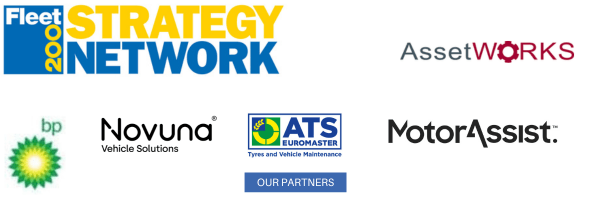Economic factors expected to affect the UK in 2024 and beyond should prompt fleets to take preparatory action now to effectively be able to manage the cost impact on their businesses.
Alex Ali Marks, Deloitte senior manager in the employment tax and car consulting team s ought to answer the question, are wider economic factors conducive to businesses procuring vehicles at a reasonable cost or are there factors that will force a shift in their standard approaches to fleet operations.
ought to answer the question, are wider economic factors conducive to businesses procuring vehicles at a reasonable cost or are there factors that will force a shift in their standard approaches to fleet operations.
At the latest Fleet200 Strategy Network meeting Marks looked at key economic factors, including geopolitics and government policies, before presenting how businesses might react.
The economy
“Economically, we are expecting a weak start to 2024, with an improving second half of the year looking likely,” he said. “Inflation, interest rates and insurance costs are all creating a challenging environment.”
Inflation peaked at 11.1% in October 2022. It’s now not reached the target of 2% but is down to around 4%.
It could likely fall further later in the year. This fall has helped increase GDP (0.3% growth), rather than any increase in productivity.
Interest rates, he said, and the cost of electricity are expected to fall this year, helping to alleviate the falls in disposable incomes from rising mortgages and rent costs.
Unemployment is low and wage growth is strong, which has a positive impact on demand for vehicles amongst perk and salary sacrifice fleets particularly.
But Deloitte believes unemployment could start to rise, if only moderately. And insurance costs have risen 50% in a year.
A positive for fleets operating EVs is the expected improvement in electricity prices this year, with an expected fall in the price cap in April.
Geopolitics and government policy
“Geopolitical challenges could add inflationary pressures due to trade disruption and conflicts that could lead to one-off events – such as Russia’s invasion of Ukriaine - that could have significant repercussions for the automotive industry, amongst others,” said Marks.
As well as Ukraine, these include the presidential election in Taiwan, the largest producer of semiconductors in the world, a key component of vehicle manufacturing, disruption to trade in the Red Sea, slowing down the logistics chain, impacting production cycles and putting up costs, prompting a retaliatory action of increasing costs.
In the UK, the delay in the introduction of Brexit-related trade tariffs –which were likely to lead to a 10% increase in vehicle prices - until 2027 was a “significant win” for fleets transitioning to EVs, with another positive being HMRC’s guidance on home charging not being classed as a taxable benefit.
But this is balanced by easing of financial incentives to make the switch from diesel and petrol cars such as the rise in Class 1A national insurance contribution costs and vehicle excise duty (VED) planned up to 2027/28.
The zero-emission vehicle mandate, which sets out the percentage of new zero emission cars and vans manufacturers will be required to produce each year up to 100% by 2035, was described as a stick to beat the industry - “but no one knows how the stick is going to be used”, or how OEMs will achieve the target.
“Falling residual values have made EVs more expensive, reducing driver demand when it comes to leasing renewal time; the battery electric vehicle share of new vehicle registrations has also flatlined.
“Yet, Stellantis has cautioned against decreasing prices, in the light of competition from Chinese brands, which have or plan to enter the UK market. WIll this overcome one of the barriers to widespread EV adoption, which is cost?”
Fleet responses to the challenges
Marks suggested the following options, and their potential impacts:
Option
Limit drivers to less expensive vehicles
Impact
Adverse employee reaction, plus limiting the numbers transitioning to EV
Option
Expanding operating cycles to retain higher value vehicles within budget, four years for cars, five for vans
Impacts
Increased duty of care considerations
Increased maintenance costs
Need evidence it can be accepted by employees
Option
Require trade-ups for high value vehicles, getting employees to contribute to the cost (salary sacrifice)
Impacts
Effective means of cost control when people first transition to EV
More challenging ask for existing EV drivers
Communication will be critical
Option
Provide wider non-taxable benefits such as workplace charing, home chargers and subsidised electricity
Impact
An additional business cost except when done through salary sacrifice.























Login to comment
Comments
No comments have been made yet.